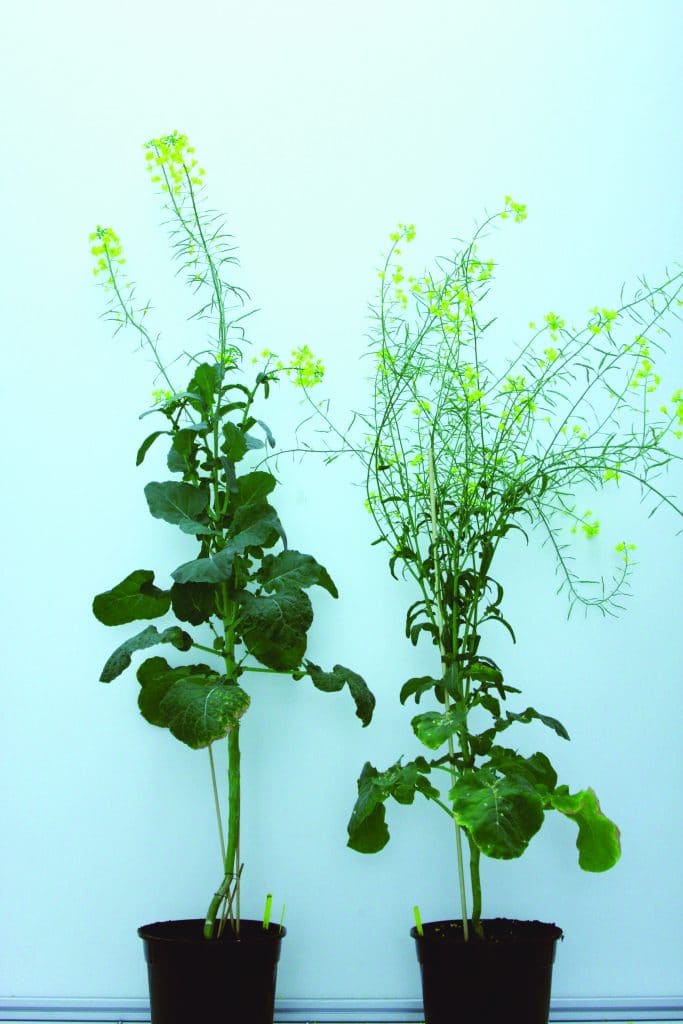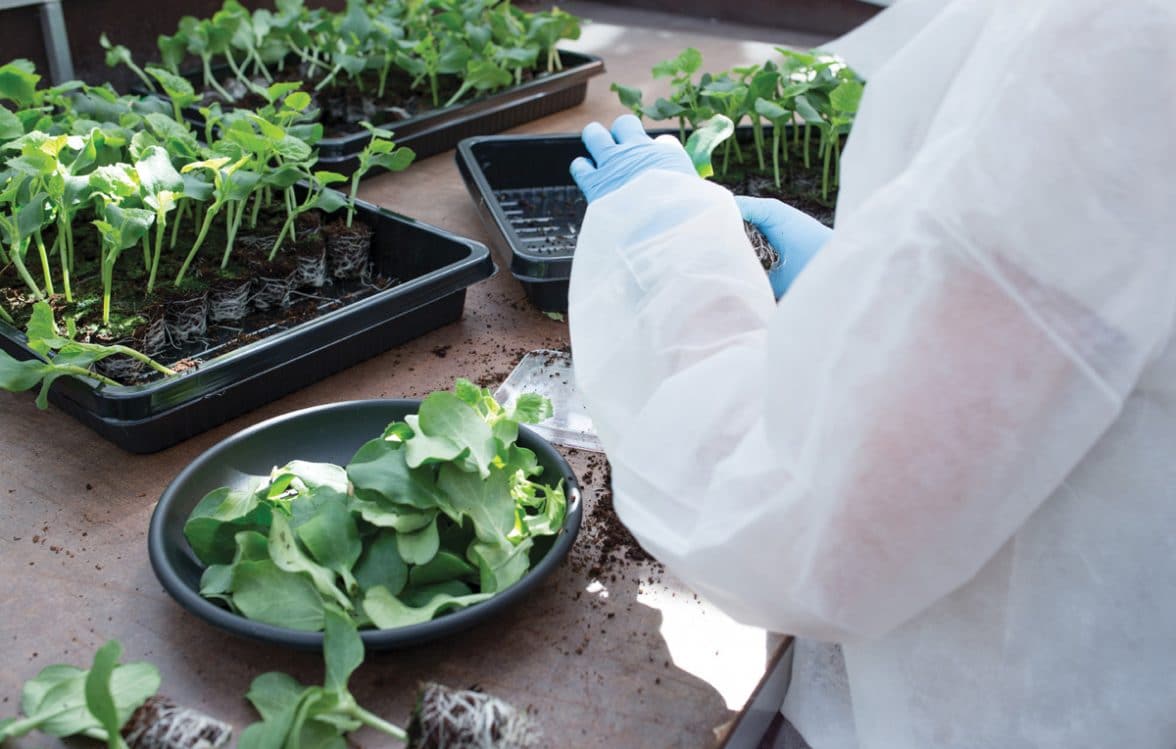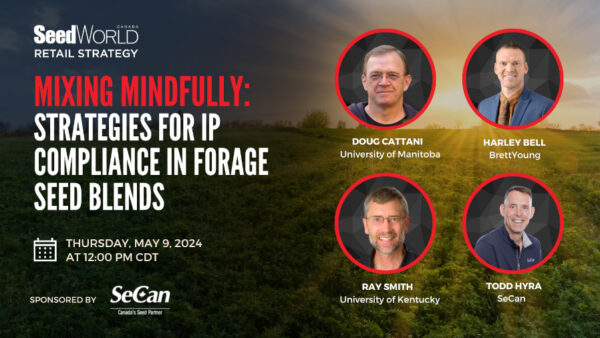A look at ag-biotech company Keygene.
Drivers of innovation in plant breeding and the seed sector, ground-breaking technologies, bioinformatics analysis, and the importance of partnerships are but a few topics of discussion between Michiel van Eijk, chief scientific officer at KeyGene, and European Seed. In this interview, Van Eijk elaborates on past, present and future innovations that affect plant breeding.
European Seed: Why is a constant stream of innovations important for plant breeding and the seed sector?
Michiel van Eijk: At present, the most important driver for innovations in plant breeding and the seed sector are the challenges we face with respect to food insecurity, as a consequence of the growing world population and climate change. We all know by 2050 the world population is expected to grow to nine billion people. This means food production must be almost doubled. This has to be achieved with the existing land surface, but with less water and less impact on the environment.
As a result, there’s a strong call for better performing crops—crops suited to growth in more arid regions, crops that are salt tolerant and can grow in regions where fresh water is scarce but salt water is available, or crops that better withstand diseases and plagues. And, of course, crops with increased yield, which is the most important and, yet, most complex trait in crops.
Another driver for innovation comes from people like you and me. A growing group of consumers are demanding healthier and safer products. We want more choice, and we look for food that’s highly nutritious, looks appetising and can be stored for a long time.
A final point about what drives innovation has to do with the globally competitive environment the seed breeding industry works within. The introduction of new varieties to the market, especially highly successful ones, can make the difference between being successful and becoming a market leader or missing out. Our highly competitive business is driven, to a large extent, by innovation: through innovation, companies can obtain and maintain a market share.
ES: What are some of the most ground-breaking breeding innovations of the past decade?
MvE: Next generation sequencing (NGS) technology is one of the most ground-breaking innovations of the past decade. NGS was introduced in 2005 during the drive to sequence the human genome at a competitive cost. The crop industry immediately recognised the advantages of this fundamentally different approach to sequencing, and has been able to utilise NGS technologies to advance molecular breeding research in crops.
NGS technology represents, in my mind, a true revolution in genomic science. It became possible to sequence the genomes of a large variety of vegetable and field crops, and it has really accelerated the pace at which the genetic basis of complex traits can be understood. Good examples of complex traits are yield and flavour—they have at least a dozen, if not many dozens, of underlying genes which, all together, are responsible for crop performance.
In order to improve yield, flavour, or any other complex trait, detailed information is needed from as many genes involved as possible. Without the developments in NGS, research of these complex traits, traits that are influenced by variations within several genes, was nearly impossible. Up to that point, research had focused mainly on simple traits, so much has changed in the field of crop breeding. If you go back in time 10 years, it took one year, or sometimes much longer, to identify the genetic basis of a simple trait. Now, with a genome sequence at hand, we have the ability to unravel complex traits in a short time span. It has changed the way plant breeding is taking place today.
ES: What have these developments in the field of NGS brought the breeding industry and seed sector so far?
MvE: It is clear in the field of marker-assisted breeding— crop breeding with the help of DNA markers, which make selection of the correct plants possible at a very early breeding stage—there has been a sea of change. Not only have breeders and researchers gained access to the genetic codes of most important vegetable and field crops, but at the same time there are no more limitations with respect to the number of molecular markers to use in their breeding programs.
Whereas a decade ago, for some crops, it was very difficult to identify varieties and genetically differentiate between them – today enough natural genetic information has been uncovered in most commercial crops for that no longer to be an issue. That’s a tremendous advantage for breeders. It really accelerates their breeding process and makes it more cost-effective at the same time. NGS technology has drastically changed the way we innovate our crops.
ES: Do you have any other examples of how crop breeding work has changed?
MvE: I’m really impressed by the way molecular mutagenesis technologies have changed our work. With molecular mutagenesis technologies, new variations can be introduced into crops, essentially creating new traits. This can be done very precisely, in a pre-selected location, or it can be done randomly.
It is too early to speak about concrete products or revenues, as this is very recent technology; however, the prospects are very promising with regard to introducing new crop variations. For example, due to the large size of oilseed rape (Brassica napus) plants, they are at risk for lodging. This makes harvesting of the seeds more difficult, with seed loss as a major consequence.
We have solved this problem by using plants with a dwarf character and shortened stems. Having identified the genetic basis of the dwarf character, variation was introduced in the large oilseed rape plants. This could be done without the loss of specific traits, such as oil composition and seed yield. As a result, the seeds of the newly developed plants could be harvested easier, with less, or even without, seed loss. A big advantage of this method is this technology can be applied in a company’s own breeding material.
Another important aspect is crops developed with molecular mutagenesis can be brought to market faster, compared with traditionally developed crops; in addition, it’s faster and much more cost-effective than GM crops. I strongly believe that this is a particularly important development for all breeding companies.

ES: What did KeyGene contribute to innovation for breeding?
MvE: KeyGene is active in both areas of innovation mentioned above. With respect to sequencing activities, we are an inventor of sequence-based breeding, and a strong believer in using NGS technologies to advance crop species. In fact, we were the first to sequence the melon genome.
Using NGS technologies, we contributed to unravelling the genome of several vegetable and field crops, such as tomato and cotton—all agronomically important crops. We continue to work at the forefront of these developments. Although the production of genetic data is no longer an issue, extracting relevant information from it still is. We are also developing dedicated software tools for working with these enormous amounts of sequencing data.
With respect to molecular mutagenesis, we are active in both targeted and random mutagenesis technologies. We apply proprietary technologies for our clients, which, in combination with highly accurate phenotyping—measuring visible plant characteristics—allows for rapid identification of plants with improved traits.
ES: The aforementioned innovations are occurring within the breeding sector. Are there any innovations outside our sector that have had a major impact?
MvE: Many developments relevant to the crop breeding industry take place in the field of human research. NGS technology is one of them. Activities such as highly automated sample preparation, to process biological samples on a large scale in a cost-effective way, are innovations mostly initiated in the medical field. Subsequently, these developments will be picked up in the plant field, and also by KeyGene, to develop technologies for crop applications.
Another field which is important in this context is bioinformatics analysis. All innovations discussed so far rely, to a large extent, on the ability to process, analyse and interpret large sets of complex data.
Over the past 10 years, the area of bioinformatics has grown significantly in importance. Nowadays, bioinformatics is an intrinsic part of innovation. Complex and large amounts of data (i.e. big data) are hot at the moment. With respect to bioinformatics, in our field we wouldn’t be able to innovate without the ability to interpret big data.
Looking forward, innovations in many industry sectors and expertise areas—for example, in the pharmaceutical (e.g. stem cell biology), engineering (e.g. digital phenotyping) and information (e.g. data interpretation) industries—will impact innovation in the breeding sector.
ES: What are crucial aspects to stay at the forefront of innovation?
MvE: I strongly believe that partnerships are increasingly important in order to solve complex problems. A multi-disciplinary approach is key to today’s and tomorrow’s breeding challenges. Through partnering, we can leverage external knowledge from industry, academia and consortia, and we can team up to find solutions for the big challenges the world is facing.
You cannot expect yourself to be a leading expert in every field, so choosing appropriate partners to co-develop products and jointly strive to innovate is of growing importance. It might not be unique to our sector, but it is of the utmost importance. In order to realise this, you must be an attractive partner yourself. This requires a culture that stimulates creativity, teamwork and the desire to really make a difference. Partnerships are crucial to innovation. You cannot be a leading expert in every field.
A good example of cross-border collaboration is city farming. It is a relatively new concept in which crops are grown in cities, in closed environments, under artificial light. We are preparing a pilot scheme to combine our expertise on plants, and plant characteristics, with greenhouse, growth chamber and LED technology provided by other companies, in order to develop new crops ideally suited to city farming.
This concept has great potential and offers added value for consumers in large cities all over the world, where production and availability of fresh food can be a major challenge.
ES: We talked about what companies can do to boost innovation. But what aspects should be changed in the regulatory field to stimulate innovation?
MvE: Innovation cycles are rapidly becoming shorter. However, I have noticed there is a discrepancy between technological capabilities on one hand and support from the regulatory environment on the other. It is of the utmost importance this gap is somehow reduced.
Technological capabilities demand legal certainty so they can be deployed in the market. At the same time, I fully understand policy-makers, the people who make the regulatory decisions, struggle to get an in-depth understanding of complex subjects, such as new breeding technologies (NBT). Ultimately we need to work together, otherwise there will be no innovation.
ES: In other parts of the world, the gap you describe seems to be much smaller. Technologies under discussion in Europe are allowed to be used in other parts of the world. What do you think about that?
MvE: Apparently, in some parts of the world, the regulatory climate is more favourable to innovation. The application of NBT, in particular, has been hampered by the absence of legal certainty in Europe. This is a real burden for the breeding industry.
If the legal framework remains unclear on whether or not commercialisation of new technologies is supported, sooner or later it will affect a company’s motivation to invest in research. Ultimately, it should be a sensible business model that drives the innovation. If the regulatory climate is unclear, it will obviously hinder innovation. Regulation can be a burden but also a boost for innovation.
ES: Let’s have a look at the future. Which exciting crop innovations can be expected?
MvE: I imagine one of the forthcoming innovations might be that genetic analysis will be conducted in the field by the breeders themselves. There are still a large number of routine analysis methods and research activities that have to be performed in expensive laboratories.
I expect our future certainly includes the possibility of crops being analysed remotely in the field or in a greenhouse. As a consequence, the process of plant selection will be so much faster, and the whole breeding process will be accelerated. It will require miniaturisation of equipment and very fast read-out methods, but there are already developments in that direction, as we have seen with miniaturised DNA analysis equipment.
The same holds for digital phenotyping capabilities, yet another innovation that started about five years ago. Digital phenotyping makes crop phenotyping much more objective. It no longer relies on the experienced, but nevertheless subjective, interpretation by breeders.
With digital phenotyping, high throughput automated equipment with digital cameras is being used to measure crop performance. Bioinformatics subsequently takes care of the extraction of objective information. As with remote crop research work, the first steps have been taken to perform bioinformatics analytics in the field. It’s early days yet, but I’m sure in future these types of research will be performed in the field.
ES: These are technical developments. What about the future of traits?
MvE: I expect more output-related traits will be unravelled, and will be used for crop improvement. I think smart allocation of the increased technological repertoire to drive crop innovation will translate into even faster development of new varieties with better resistance, better flavour, higher yields, and a better ability to grow in harsh environments, such as dry climates or highly saline soils.
ES: Do you think that crop breeding will fundamentally change in the near future?
MvE: To fundamentally change crop breeding is a long-term challenge. First of all, it requires a lot of in-depth knowledge of the mechanisms of plant reproduction. Secondly, changes have to be compatible with a viable business model. Thus, I don’t think those changes will come very rapidly.
In the short term, thanks to the latest advanced technologies, breeding will be further accelerated, and will become more cost-effective. It’s beyond any doubt in the next decade we will see more ground-breaking innovations in crop breeding and the seed industry. KeyGene finds itself in a dynamic, fast-developing field with great potential to tackle the challenges of tomorrow.













